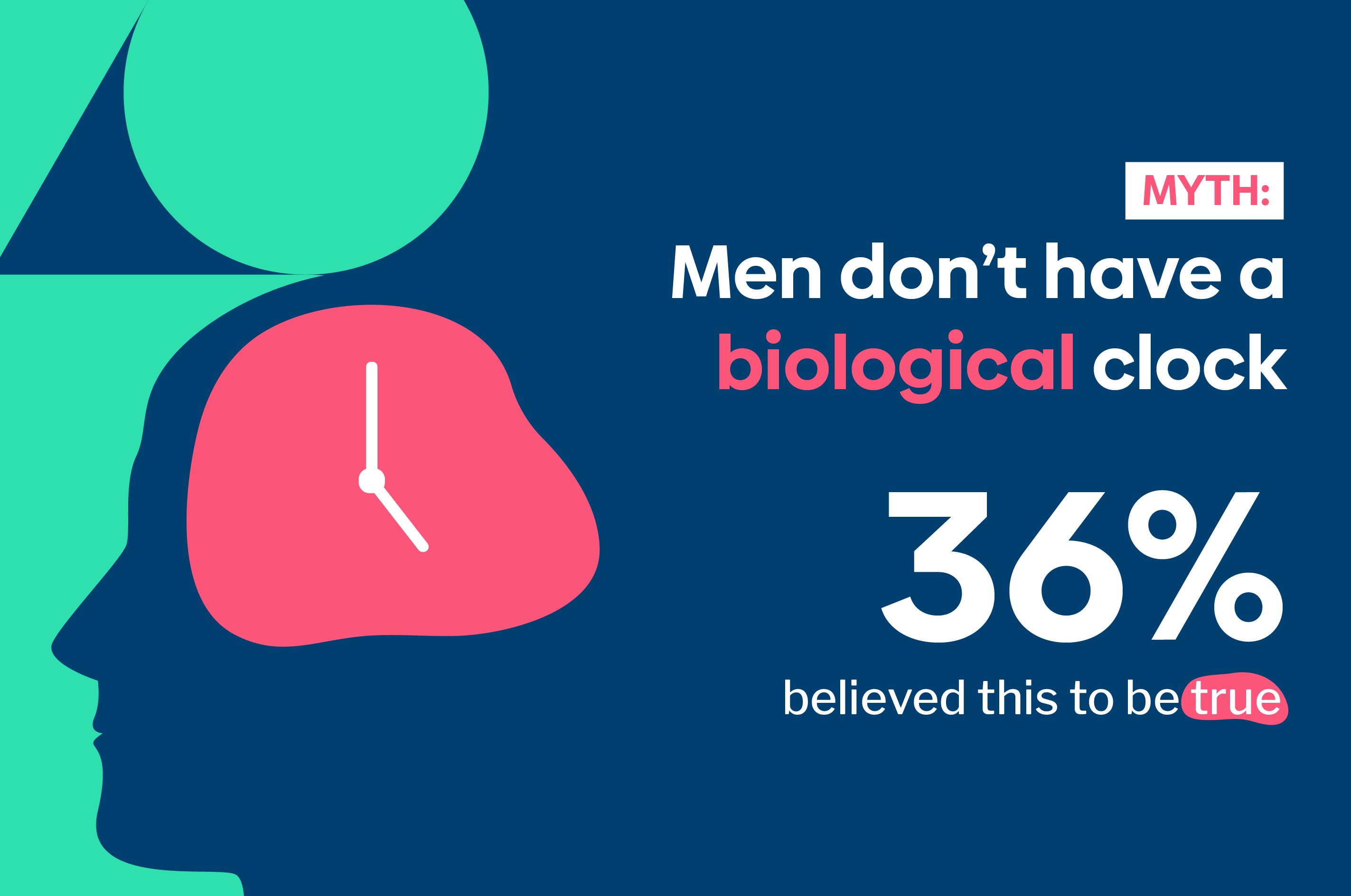
09:30 8th April 2022 | Infertility Myths
Infertility Infertility Myths Myths Debunked
Infertility is emotionally draining for almost everyone experiencing it. The couple tries, day and night, praying at 12 midnight and then 7 am, eating and drinking the best concoctions and meals, sometimes dashing home through traffic to try a back-breaking sex position, so that the sperm can meet the egg at the golden hour of ovulation. Then along comes someone, who may mean well, with a new theory on why their efforts are not working. Arrgh! Seriously though?
With so much information available on the internet, it can be difficult to sieve through myth and fact. Here are some myths to watch out for and help dispel.
1. Infertility is the woman's problem:
It takes the egg from a woman and the sperm from a man to start the process of conception. It is interesting to note that infertility affects men and women equally, either
individually or together. Therefore, both parties must be evaluated during the fertility workup.
2. If a man has a normal sexual function, he can get a woman pregnant:
While normal sexual function is needed to introduce semen into the vagina, the semen needs to contain an adequate number of viable healthy sperm cells to achieve conception. Prolonged
abstinence from sex does not increase the chances of getting pregnant either.
3. Laying with your feet up and hips raised after sex increases the chances of conception:
Though this might be a comfortable position for some, there is no scientific evidence that this position increases the chance of pregnancy. Healthy sperm are good at swimming and
locating an egg, regardless of whether you are lying down, standing up, if penetration was complete or barely even occurred.
4. The womb needs to be "set: before a woman can get pregnant:
Nobody sets their knees to walk unless there is a congenital abnormality. If there is a congenital abnormality of the uterus, surgery might correct it, not a random woman who inserts
her fist into the vagina to fiddle around. Stop it!
5. The thick mucoid vaginal discharge around the middle of your cycle means you have ovulated or will ovulate a healthy egg:
The mucus plug in the cervix thins and may fall out around the time of ovulation to allow easier entry of sperm cells into the uterus. The sequence of events may include the release
of a healthy egg from the ovary. It is important to note that not all eggs released will be satisfactory for penetration by the sperm, not all eggs that unite with sperm will be
fertilized, and not all fertilized eggs will make it to the point of implantation.
6. All couples should try for at least one year before seeing a fertility specialist:
Fertility declines with age, much faster in the woman than in the man. For women 35 years or older, those who have a history of endometriosis, uterine fibroids, irregular periods,
ectopic pregnancy, pelvic adhesions, sexually transmitted infections, or family history of menopause before the age of 40, help should be sought as soon as they start trying for a
family. This also holds true for men with a history of surgery, infection or trauma to the genital organs, and some chronic diseases like sickle cell. It is better to find out early
if there is an issue that one needs assistance to tackle.
7. Children conceived via IVF usually have developmental issues:
This would be the exception, not the rule. Louise Brown, the first person conceived via IVF is over 40 years old and doing fine. According to a study published in JAMA Pediatrics,
children conceived using in vitro fertilization (IVF) have no higher chance in exhibiting developmental delays than children conceived without fertility medicine.
8. IVF is the sure way to have twins or triplets:
While the number of embryos transferred into the uterus can be determined during the IVF process, some things cannot be controlled including whether the embryos implant or not, and
whether a single embryo will split. The fertility world is moving towards single embryo transfer, which is safest for women. So, if two embryos are transferred and the woman gets
pregnant, she may have between 0 and 4 babies. Remember, IVF success rates average about 35-40% and a singleton pregnancy poses the least risk to mother and child.
9. The chances of getting pregnant increase after adopting a child:
Research does not support this myth. There is a 16-24 percent chance that a woman who has had IVF can conceive spontaneously up to 6 years afterward, regardless of the outcome of the
cycle or if it was interrupted. A lot of adoptive parents fall into this category of spontaneous pregnancy.
10. If you relax more, you will get pregnant:
Infertility is more of a physical problem, not a psychological one. The deep emotions felt are usually because of it. Relaxing can improve your overall quality of life but will not
cure infertility.
Image credit: Healthily
By Dr. Tambari Femi-Oluwole, Head of Clinic Port Harcourt
To find out about how Bridge Clinic can assist you, contact Nigeria’s most trusted fertility centre today.
Email: enquiries@thebridgeclinic.com
Call: 01 631 0092 / Whatsapp: +234 (0)810 460 7791.
Visit: 66 Oduduwa Way, Ikeja GRA
Search by condition, treatment or keyword and conveniently browse our informative articles
Book an appointment online or search for a clinic close to you.
Book an Appointment